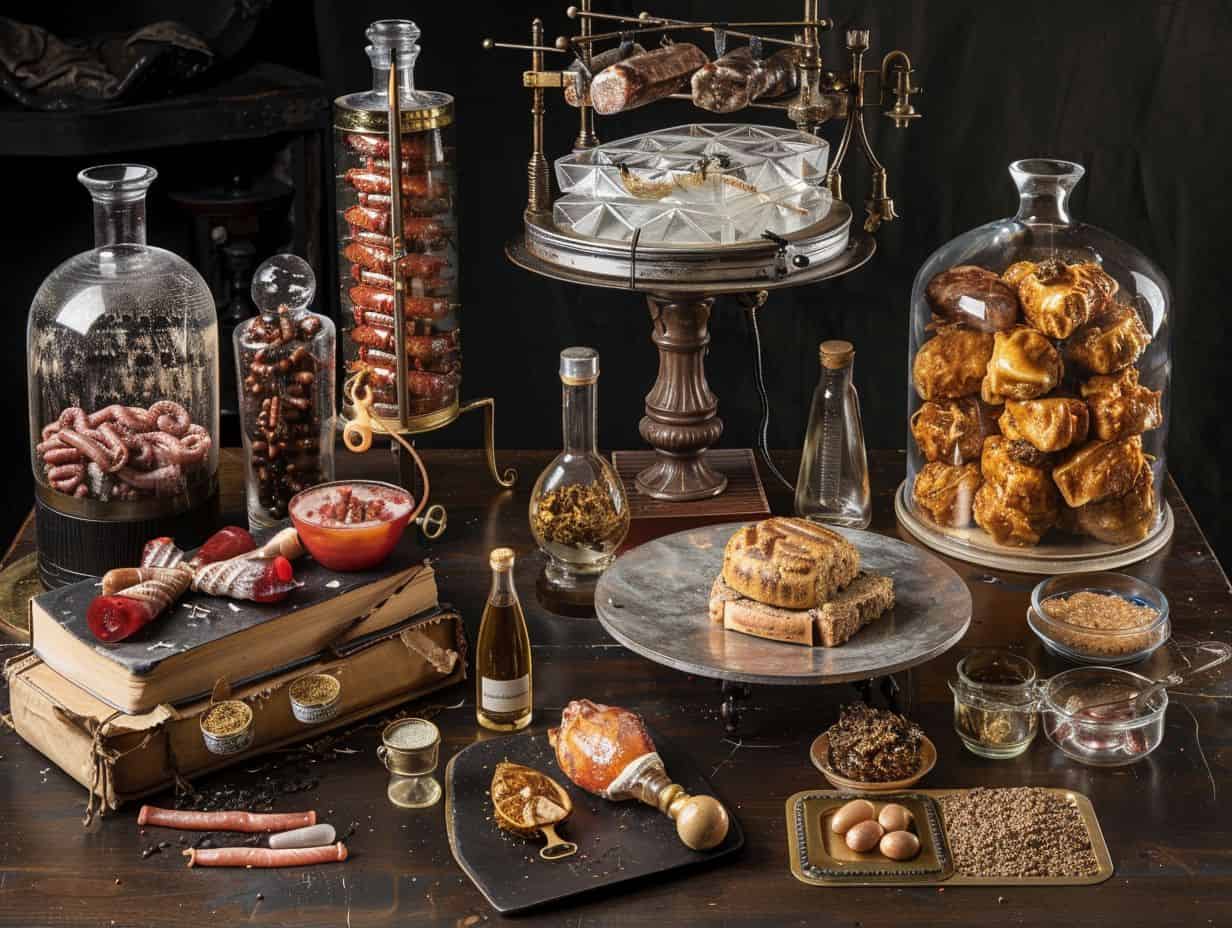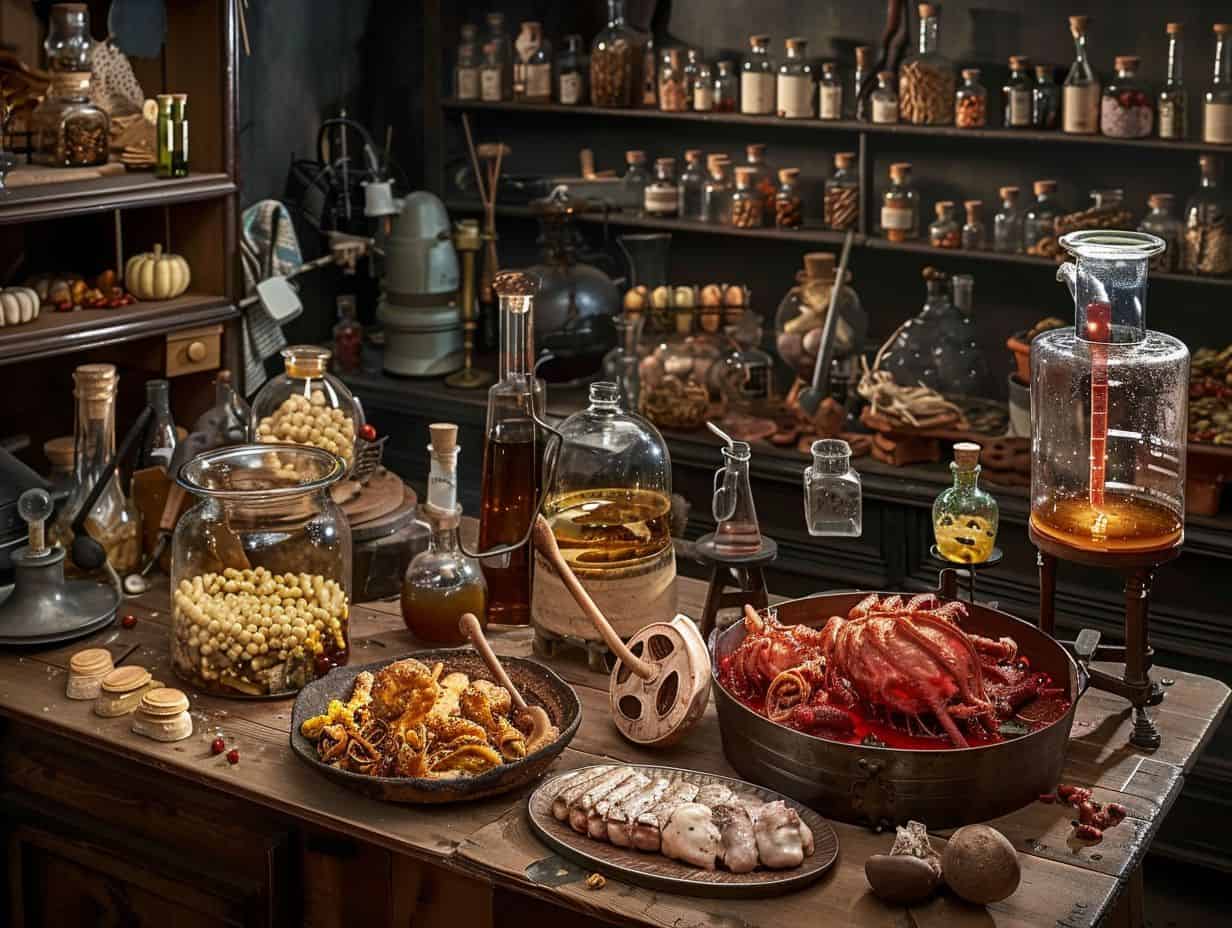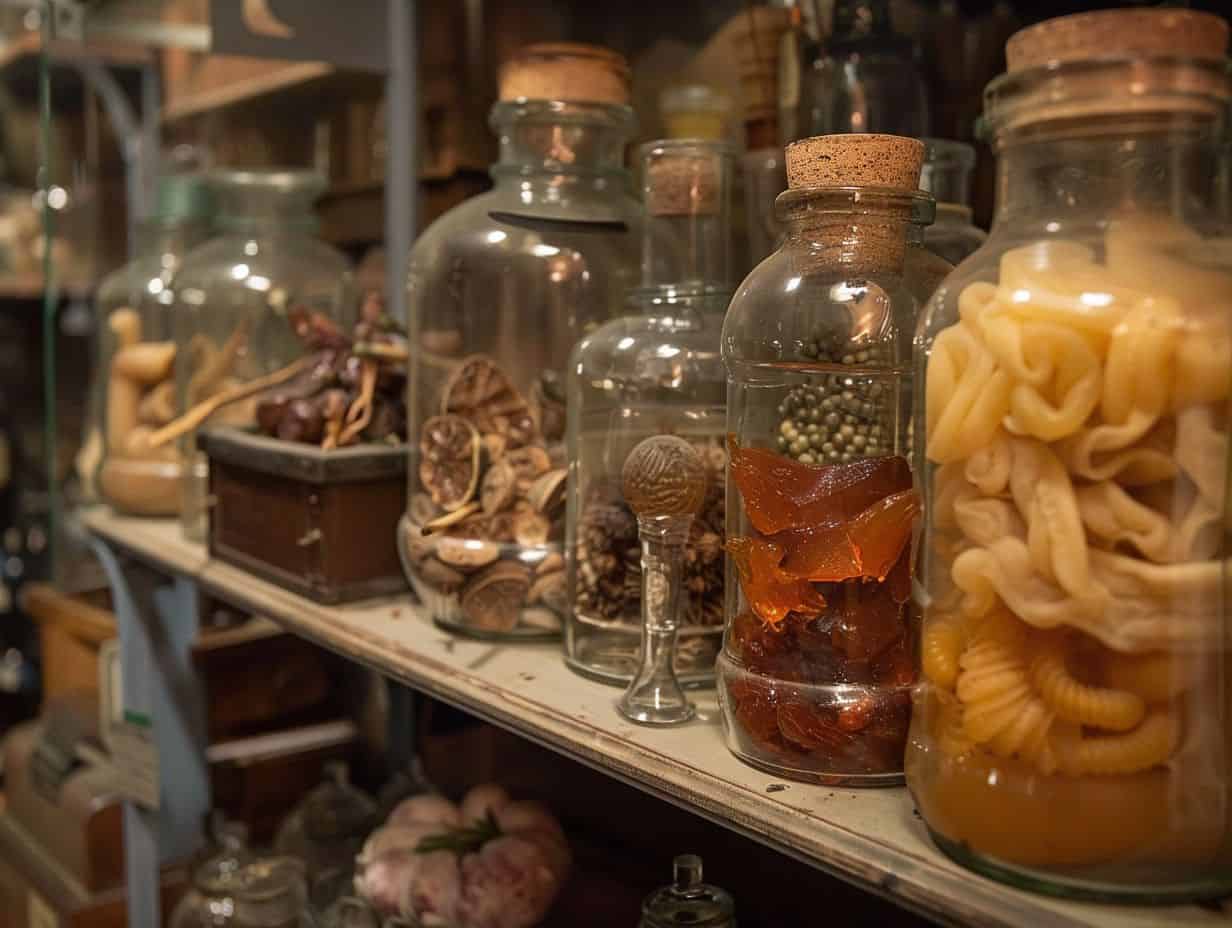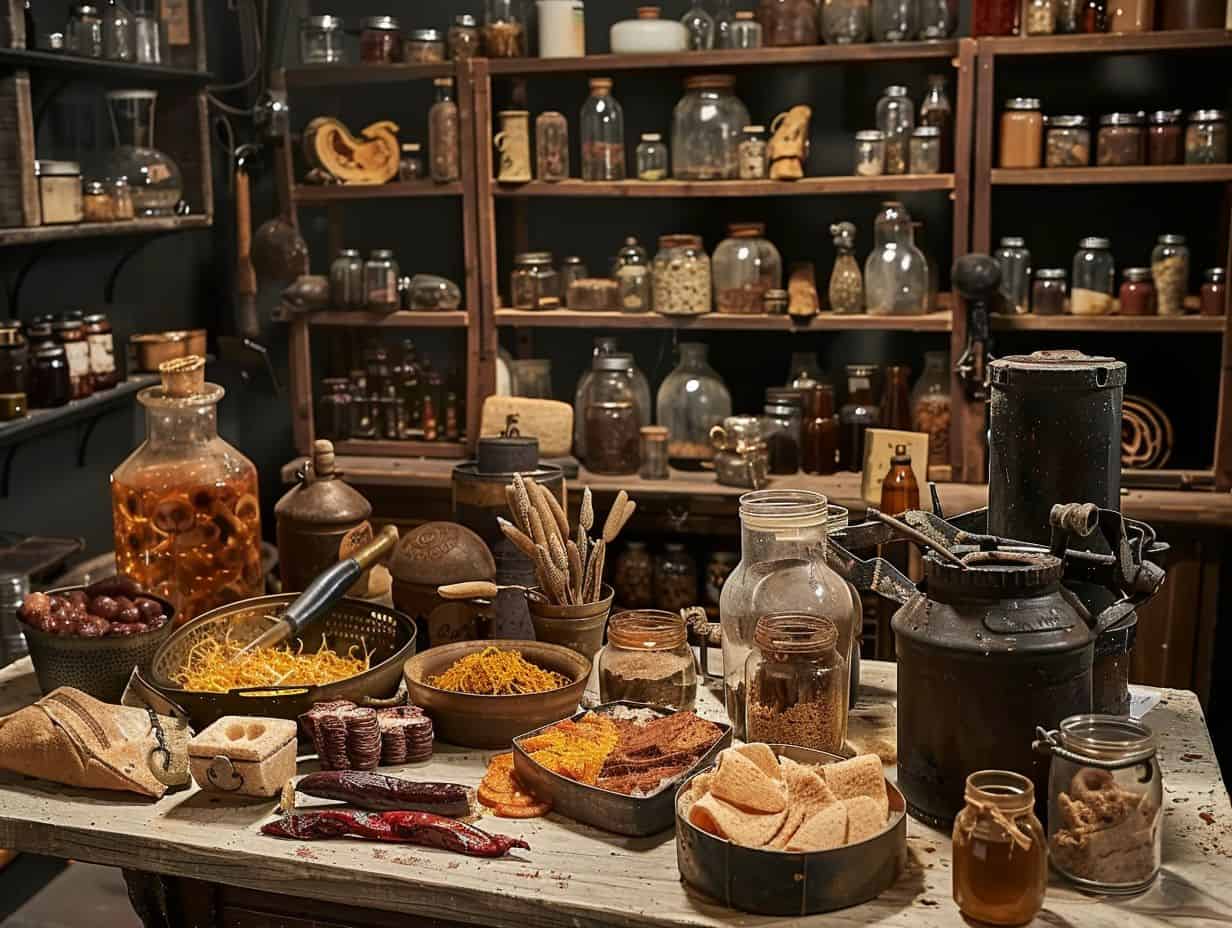Preservation is essential for Meals Ready-to-Eat (MREs) for various reasons.
This article will discuss the importance of preserving MREs and the consequences of spoilage. It will also examine techniques used to prolong the shelf life of MREs, including retort pouch packaging, freeze drying, and high-pressure processing.
Factors that impact the shelf life of MREs and methods for extending it in the field through appropriate storage and handling will also be addressed.
The article will delve into the science of preservation to guarantee that MREs remain fresh and ready to eat when required.
Why Is Preservation Important for MREs?
Preservation is essential for maintaining the quality, safety, and longevity of Meals Ready-to-Eat (MREs) intended for both military and civilian use. Through the utilization of advanced preservation methods and technologies, the shelf life of MREs can be prolonged, preserving their nutritional content and flavor even in difficult conditions.
What Happens When MREs Spoil?
When MREs spoil, they present serious risks to consumer health due to microbial contamination or chemical reactions. The consequences of consuming spoiled MREs include foodborne illnesses, loss of nutrients, and degradation in taste and texture.
The impact of food spoilage on shelf life is significant, leading to financial losses for both consumers and manufacturers. Adhering to proper preservation strategies and following food safety standards is crucial in minimizing the risks of MRE spoilage. By storing MREs in suitable conditions, such as maintaining proper temperature and ensuring adequate packaging, the likelihood of spoilage can be significantly reduced.
It is essential for individuals and organizations involved in handling MREs to prioritize food safety and take proactive measures to prevent spoilage, ensuring the integrity and safety of the food supply chain.
What Techniques Are Used to Extend MRE Shelf Life?
Different preservation techniques are utilized to prolong the shelf life of MREs, guaranteeing their long-term viability and quality. These techniques encompass:
- Retort pouch packaging
- Freeze-drying
- Dehydration
- Irradiation
- The use of chemical preservatives
- Modified atmosphere packaging
- High-pressure processing
- Vacuum packaging
1. Retort Pouch Packaging
Retort pouch packaging is a common preservation method for MREs. This technique involves using heat and pressure to sterilize and seal food in flexible pouches, which helps prolong the product’s shelf life.
The process consists of filling the pouches with food, sealing them, and then exposing them to high temperatures in a retort chamber. The heat and pressure work together to target harmful microorganisms, ensuring the safety of the food for an extended period. By eliminating spoilage-causing pathogens, retort pouch packaging not only enhances food safety but also plays a significant role in reducing food waste.
Effective packaging techniques are crucial for preserving the quality of food and extending its shelf life. Therefore, retort pouch packaging is considered a valuable asset in the field of food preservation science.
2. Freeze Drying
Freeze drying is a preservation technique that involves freezing food and then removing the ice content through sublimation, resulting in dehydrated and shelf-stable products suitable for MREs. This method of preservation extends the shelf life of food while preserving its nutritional value and flavor.
In food processing, freeze drying is essential for creating lightweight and compact products that are easy to store and transport, making it a popular choice for producing ready-to-eat meals and snacks. Product development teams often use freeze drying to introduce new textures and culinary experiences to consumers. Strict preservation protocols are implemented throughout the freeze drying process to ensure quality and safety, guaranteeing that the final products meet regulatory standards.
3. Dehydration
Dehydration is a preservation method that involves removing water from food products to inhibit microbial growth and enzymatic reactions, thereby enhancing the shelf life and maintaining the nutritional quality of MREs. This preservation technique is based on the principle that the absence of water prevents microorganisms from thriving and enzymatic activities that lead to spoilage. By removing moisture, dehydration reduces the water content in food, preventing the growth of bacteria, mold, and yeast. As a result, the shelf life of food products is significantly extended, making them suitable for storage over longer periods without the risk of degradation. Dehydration helps to retain the essential nutrients in MREs, ensuring that they remain both nutritious and flavorful for consumption.
4. Irradiation

Irradiation is a preservation method that uses ionizing radiation to eliminate pathogens and prolong the shelf life of MREs, offering microbiologically safe food products for consumption.
This method is especially effective in controlling common foodborne pathogens such as E. coli and Salmonella, ensuring the food’s safety for consumption. Irradiation can assist in addressing challenges related to spoilage and food waste by slowing down the natural aging process of food products.
Despite its effectiveness in preserving food quality, some concerns have been raised regarding the potential impact of irradiation on nutritional content and overall food quality. Comprehensive research has indicated that when applied correctly and within recommended dosage levels, the nutritional impact is minimal, making irradiation a valuable tool in ensuring food safety and extending shelf life.
5. Chemical Preservatives
Chemical preservatives are additives used in MREs to prevent microbial growth, control chemical reactions, and maintain product quality, adhering to strict preservation standards and practices. These preservatives play a crucial role in ensuring that the food remains safe for consumption over extended periods.
By inhibiting the growth of harmful microorganisms, the preservatives help in extending the shelf life of MREs and reducing the risk of foodborne illnesses. They assist in managing chemical interactions within the food, thus preventing spoilage and maintaining the nutritional content.
Chemical preservatives also aid in upholding the required preservation standards by meeting regulatory guidelines and industry protocols to ensure food safety and quality.
6. Modified Atmosphere Packaging
Modified atmosphere packaging is a technique that involves adjusting the gases surrounding MREs to create an ideal environment. This adjustment helps extend the shelf life by inhibiting microbial growth and oxidation, providing a solution to preservation issues and offering various advantages.
By regulating oxygen, carbon dioxide, and nitrogen levels within the packaging, this method reduces the speed of deterioration in food products. It is effective in slowing down enzymatic reactions and microbial activity, which are major contributors to spoilage. By decreasing the oxygen content, it also lowers the risk of oxidative rancidity and discoloration.
Through these processes, modified atmosphere packaging significantly increases the quality and freshness of food items, making them less susceptible to decay and ensuring a longer shelf life.
7. High Pressure Processing
High pressure processing is a preservation technique that uses high pressure to deactivate enzymes and microbes in MREs, meeting strict preservation standards and reducing the environmental impact of food processing.
This method is commonly employed in various food applications to prolong the shelf life of products without compromising their quality or nutritional content. High pressure processing facilitates the preservation of flavors, vitamins, and textures, offering consumers access to safer and healthier food choices.
The environmental advantages of this technique include lower energy consumption compared to traditional preservation methods, making it a sustainable option for food producers. Ongoing research in high pressure processing is focused on optimizing parameters for different food varieties and investigating its potential for new product development.
8. Vacuum Packaging
Vacuum packaging removes air from packaging to create a vacuum-sealed environment, which improves storage conditions and underscores the importance of preservation education and proper food preservation practices for effective shelf life management.
This process significantly prolongs the shelf life of perishable items like fruits, vegetables, meats, and dairy products by suppressing the growth of microorganisms that thrive in oxygen-rich environments.
Teaching individuals about preservation principles not only helps reduce food waste but also encourages safe handling practices. Understanding the details of food preservation education provides consumers with the necessary knowledge to maintain the quality and nutritional value of food items for extended periods, ultimately supporting better sustainability practices and enhanced resource management.
What Factors Affect MRE Shelf Life?
Various factors can affect the shelf life of MREs, such as temperature fluctuations, moisture levels, exposure to oxygen, and light, all of which can impact food safety and preservation effectiveness.
1. Temperature

Temperature fluctuations have a significant impact on the shelf life of MREs, underscoring the importance of proper storage practices, adherence to preservation guidelines, and compliance with relevant preservation standards, including shelf life testing protocols.
Maintaining a consistent and controlled temperature is essential for preserving the quality and safety of MREs. Exposure to fluctuating temperatures can speed up bacterial growth and enzymatic reactions, leading to spoilage. It is recommended to store MREs in a cool, dry place away from direct sunlight and heat sources. Following specific storage guidelines such as keeping them in airtight containers or vacuum-sealed bags can help extend their shelf life. Regularly conducting shelf life testing is crucial to ensure that MREs remain consumable and meet safety standards.
2. Moisture
Moisture levels are crucial in food preservation, as excessive moisture can lead to microbial growth and spoilage. This highlights the importance of preservation education, understanding preservation mechanisms, and implementing effective food preservation systems.
Maintaining proper moisture levels is essential for prolonging the freshness of food. Preservation education allows individuals to grasp the nuances of moisture control and its impact on food quality. Understanding preservation mechanisms like dehydration, pickling, and canning enables one to customize their preservation methods to suit specific food items and storage conditions. Strong food preservation systems not only extend shelf life but also decrease food waste, supporting sustainability and resource efficiency in the long term.
3. Oxygen Exposure
Exposure to oxygen can expedite food spoilage and oxidative reactions in MREs, prompting ongoing research on preservation, adoption of advanced preservation technologies, extension of shelf life, and implementation of effective preservation protocols.
Increased oxygen levels in packaging or storage environments can result in off-flavors, discoloration, and nutrient degradation in food products. Preservation research is critical in understanding how various preservation methods can counteract the impacts of oxygen exposure, ensuring maintenance of food item quality and safety.
Employing state-of-the-art preservation technologies like vacuum packaging or modified atmosphere packaging enables food manufacturers to establish controlled environments that hinder spoilage microorganism growth and maintain product freshness.
Adherence to established preservation protocols not only improves food quality but also permits extension of product shelf life, reducing food wastage and advocating sustainability in the food industry.
4. Exposure to Light
Exposure to light can degrade food quality and accelerate food spoilage in MREs, requiring continuous product development, adherence to preservation principles, addressing preservation challenges, and implementing solutions to reduce the impact of light exposure.
Light exposure can result in alterations in color, flavor, texture, and nutrient content of food. This underscores the importance for food manufacturers to take these factors into account during product development. A thorough understanding of the light sensitivity of various food items is crucial for designing packaging that provides effective protection.
Preservation principles like using opaque packaging, controlling storage conditions, and incorporating light-blocking additives are essential for prolonging shelf life. For tackle preservation challenges associated with light exposure, potential solutions such as UV-resistant packaging materials and light-filtering technologies can be explored.
How Can MRE Shelf Life Be Extended in the Field?
Extending the shelf life of MREs in the field involves considering various factors such as proper storage and handling practices, stock rotation procedures, and using field-specific inspection and production systems to maintain the freshness and safety of the food supply.
1. Proper Storage and Handling
Proper storage and handling practices play a crucial role in maintaining the quality and safety of MREs in the field. This includes considerations such as managing shelf life, using appropriate packaging techniques, and reducing the environmental impact of packaging materials.
Effective storage and handling not only help keep MREs fresh and safe for consumption but also contribute to extending their shelf life. By employing suitable packaging techniques like vacuum sealing or using oxygen absorbers, the risk of spoilage and contamination can be significantly lowered. Opting for eco-friendly and sustainable packaging materials aids in minimizing the environmental impact associated with the production and distribution of MREs. Managing the shelf life of MREs through strategic rotation and proper storage conditions is essential for maximizing their usability and nutritional value during field operations.
2. Rotating Stock

The rotation of stock for meals ready-to-eat is essential to prevent expiration and maintain freshness. This involves following specific packaging guidelines, adhering to food industry regulations, and ensuring compliance with food safety standards to uphold quality and safety.
Consistently rotating the inventory of meals ready-to-eat helps minimize the risk of items expiring and losing their quality. The choice of packaging materials also significantly impacts the preservation of MRE freshness, with durable and airtight packaging extending the shelf life of the products.
Food industry regulations governing stock rotation aim to protect consumers and maintain product integrity. Adherence to these guidelines is crucial for meeting food safety standards and ensuring the highest quality of MREs served.
3. Using Field Rations Inspection and Production System (FRIPS)
Utilizing the Field Rations Inspection and Production System (FRIPS) improves the oversight and quality control of MREs in the field. It helps ensure compliance with food industry regulations, preservation certifications, and contributes to the advancement of preservation studies in the food industry.
FRIPS is essential for maintaining food safety standards by conducting thorough inspections and following preservation certifications. By integrating FRIPS into the preservation process, industry professionals can guarantee that MREs retain their quality and nutritional value.
This methodical approach not only enhances the immediate quality of MREs but also has a broader impact on the preservation industry. The incorporation of FRIPS promotes ongoing enhancements in preservation techniques, encouraging innovation and the adoption of best practices in food preservation studies.
Frequently Asked Questions
What is the science behind preserving MREs and extending their shelf life?
The science of preservation involves utilizing various techniques to prevent or slow down the growth of microorganisms, which can cause food spoilage. These techniques are used to extend the shelf life of MREs and keep them safe for consumption.
What are some common techniques used to preserve MREs?
Some common techniques used to preserve MREs include dehydration, canning, freeze-drying, and irradiation. Each of these methods involves reducing or eliminating moisture and oxygen, which are essential for the growth of microorganisms.
How does dehydration help extend the shelf life of MREs?
Dehydration involves removing moisture from food, which prevents bacteria and mold from growing. By removing the water content, dehydration creates an inhospitable environment for microorganisms to thrive, thereby extending the shelf life of MREs.
What is the purpose of canning MREs?
Canning is a preservation technique that involves sealing food in airtight containers and then heating them to kill any bacteria or microorganisms. This process creates a sterile environment, making MREs safe to consume and extending their shelf life.
How does freeze-drying contribute to preserving MREs?
Freeze-drying, also known as lyophilization, involves removing moisture from food by freezing it and then subjecting it to a vacuum, which turns the frozen water into gas. This process preserves the food’s nutritional value and extends its shelf life by preventing the growth of microorganisms.
What is irradiation, and how does it help preserve MREs?
Irradiation is the process of exposing food to ionizing radiation, which kills pathogens and reduces the number of spoilage microorganisms. This technique has been approved by the FDA for use in preserving MREs and can help extend their shelf life by up to five years.


